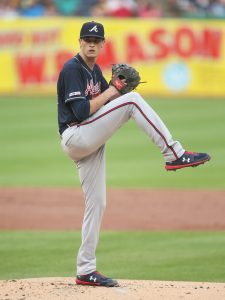SEPT. 24: Great news for the Braves: Fried will “certainly be ready” for the start of the playoffs, general manager Alex Anthopoulos told MLB Network Radio.
SEPT. 23: Braves southpaw Max Fried exited his start against the Marlins on Wednesday after one inning because of a tweaked left ankle, the team announced. Fried previously missed time with a left-side muscle spasm in his lumbar spine.
With the Braves having clinched yet another NL East title and looking for their first World Series title since 1995, a significant Fried injury could be a catastrophe for a team whose rotation has had to overcome multiple problems during the season. The Braves are already set to enter the playoffs without Mike Soroka (Achilles) and Cole Hamels (shoulder), who haven’t contributed nearly as much as expected this year and won’t pitch again in 2020.
In a rotation devoid of two of its highest-profile arms, Fried has been a saving grace and one of the NL’s premier starters. It took until Wednesday for Fried to allow a home run, when the Marlins teed off on him for two in an inning of work, though he has been brilliant for the most part. The 26-year-old owns a 2.25 ERA/3.09 FIP with 8.04 K/9, 3.05 BB/9 and a 53 percent groundball rate in 56 innings.

